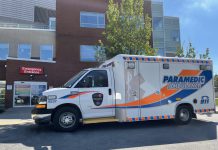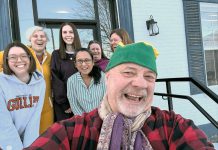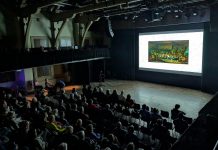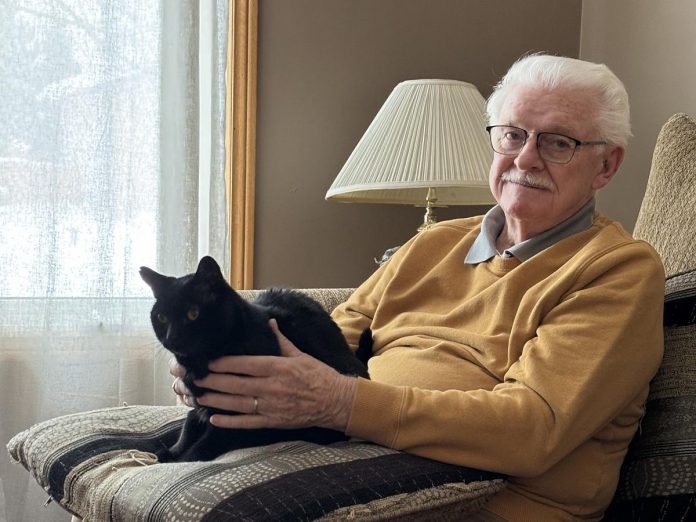
When you’re a complex cardiac patient like Peterborough resident Doug Armstrong, you want to know the physicians treating you have access to the best equipment currently available.
With the completion of state-of-the-art donor-funded upgrades to the cardiac catheterization laboratory’s two suites at Peterborough Regional Health Centre (PRHC), patients like Armstrong can be assured they are receiving world-class, lifesaving cardiac care.
“The upgrades were made possible through $3.55 million in early investments of the $60 million campaign for PRHC,” says PRHC Foundation president and CEO Lesley Heighway. “Gifts of all levels brought this to fruition.”
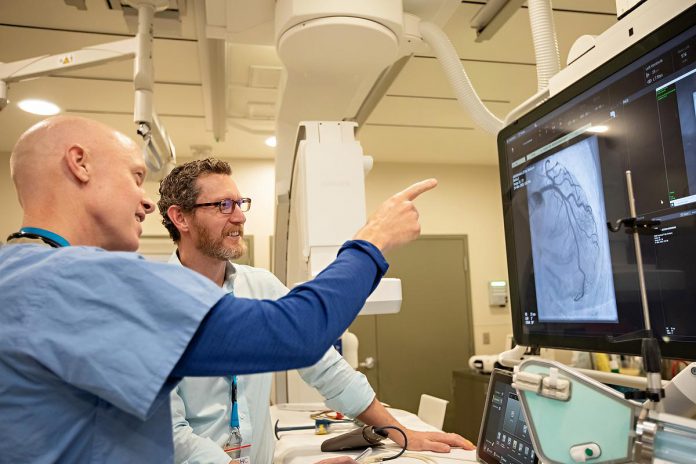
The 85-year-old Armstrong, who golfs several times a week in the summer and curls in the winter, is one of many patients who have undergone some of the more than 5,800 cardiac procedures performed at PRHC since the two renovated suites opened in 2022.
“I have to give credit to the cath lab for my longevity and for the condition I’m in,” he says. “I was so impressed knowing the new cath lab came from the community and the Foundation fundraising for it.”
A former decades-long Peterborough County chief of administration and former general manager of what was at the time the Greater Peterborough Chamber of Commerce, Armstrong was also a board member for the PRHC Foundation from 1999 to 2007 and is now a governor emeritus.
He couldn’t have known back then that 20 years later, just before the PRHC Foundation was to launch their largest fundraising campaign to date, he would come to rely so much on the lifesaving technology available at the regional hospital.
In 2018, after experiencing a discomfort in his upper chest that kept him up at night, Armstrong finally went to PRHC and he learned he had blockages in his arteries that were stopping blood from flowing to his heart.
He had an angiogram, where an interventional cardiologist assessed the blockages using a dye that goes up the arteries, before undergoing an angioplasty, where the cardiologist placed a stent that widened the arterial passage to keep blood flowing to his heart.
“There’s no aches or pains, and you’re awake throughout,” Armstrong recalls of the minimally invasive procedure. “Within a day I started to feel better, and a few days later I couldn’t believe how good I felt compared to how bad I was feeling the week before.”

Unfortunately, Armstrong became one of the two per cent of cardiac patients who experience plaque building up around the stent. Within eight months, he had to return to PRHC to have another stent put in. He ultimately had a total of three stents put in within two years, before having to undergo a quadruple bypass surgery in Toronto.
“My wife and I just marvel about how well we were treated as a patient at PRHC,” he said. “Everybody was so good to explain stuff to us and make sure we understood what was going on and what was going to happen afterwards.”
When he had his last stent procedure in May 2024, Armstrong noticed the changes that had been made to the cardiac cath lab thanks to early donor investments made to PRHC Foundation’s $60 million Campaign for PRHC.
Between September 2021 and December 2022, the two cath lab suites were upgraded with cutting-edge technology that supports the highest possible definition imagery that allows interventional cardiologists to accurately diagnose coronary blockages to stop a heart attack — sometimes while a heart attack is taking place.
“We have a new system to give higher resolution pictures faster with 75 per cent less radiation exposure to patients and staff,” says PRHC interventional cardiologist and head of cardiology Dr. Warren Ball. “We can take pictures of the arteries, find the blockage and, as accurately as possible, fix it.”
As a rare cardiac patient who needed to get multiple stents, Armstrong expresses how much it meant for him to get that treatment done without having to travel out of the city where he continues to reside.
“When I was in the hospital here at different times, my daughter could drop in for a little while, and then my wife could be there for a bit and then still go home,” he says. “The convenience of it for us who live here can’t be overstated. I don’t think we give the community enough credit for having the kind of healthcare service that’s here.”
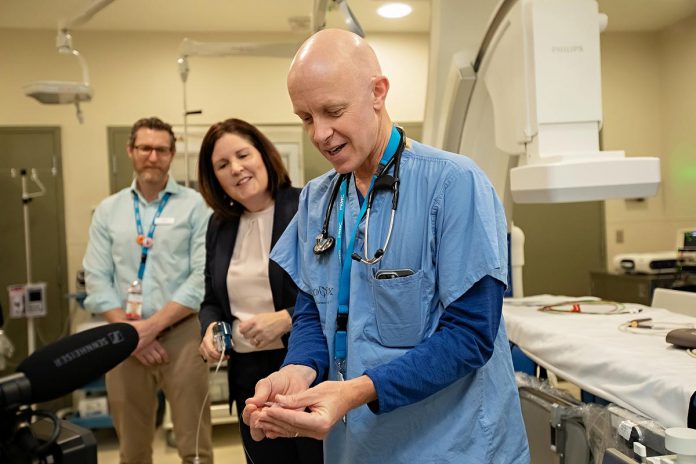
Admitting that he also did not seek medical attention as early as he should have, Armstrong says knowing that the latest in cardiac care equipment and technology is available close to home at PRHC means patients like him are less likely to delay seeking lifesaving care.
“Having that care close to home is essential,” adds Dr. Ball. “Thanks to donors, we can bring updated technology here that saves lives and makes less stressful what’s already a terrible situation for patients.”
The PRHC Foundation has now reached 88 per cent of its $60 million goal for the Campaign for PRHC. Fundraising is ongoing and one of the current cardiac care priorities donors can support is the addition of a third cardiac lab, which will introduce minimally invasive electrophysiology technology to assess and diagnose electrical conditions of the heart, such as abnormal heart rhythms and arrhythmia.
“It’s unfortunate the government doesn’t put more money into healthcare and hospital care than they do,” Armstrong notes. “Since they don’t, donating is just about the only way we can modernize the equipment that needs to go there. The community support for the hospital has been nothing short of outstanding in my view.”
The upgraded technology and equipment available at the cath lab also encourages top healthcare professionals to bring their talents and expertise to PRHC — something that is not lost on Armstrong.
“The people who work at the cath lab are world-class,” he says. “I feel confident that if I was to get a more serious problem than I have now, I’d be there in a heartbeat, and I just know that I’d be so well looked after. I just think what they’ve done for me has been just amazing.”
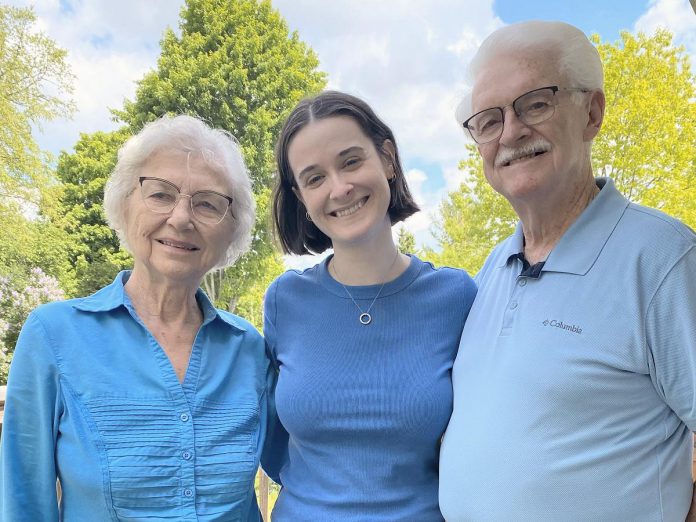
As for Heighway, she is grateful to Armstrong not only for his continued support for world-class healthcare close to home but for his willingness to share his personal healthcare story.
“Doug has been a longtime supporter of the PRHC Foundation and our hospital,” she says. “That commitment and Doug’s experience of receiving great care close to home, especially in both the previous and recently upgraded cardiac cath lab suites, give him a unique perspective on how vital donations are to keeping world-class cardiac care available right here.”
“We really appreciate him sharing his story to help others see that, and celebrate the difference that donors are making in real patients’ lives.”
To learn more about cardiac care at PRHC and to make a donation, visit the PRHC Foundation website at prhcfoundation.ca/what-to-support/areas-of-care/cardiac-care/ or call 705-876-5000.
This branded editorial was created in partnership with the Peterborough Regional Health Centre Foundation. If your organization or business is interested in a branded editorial, contact us.


